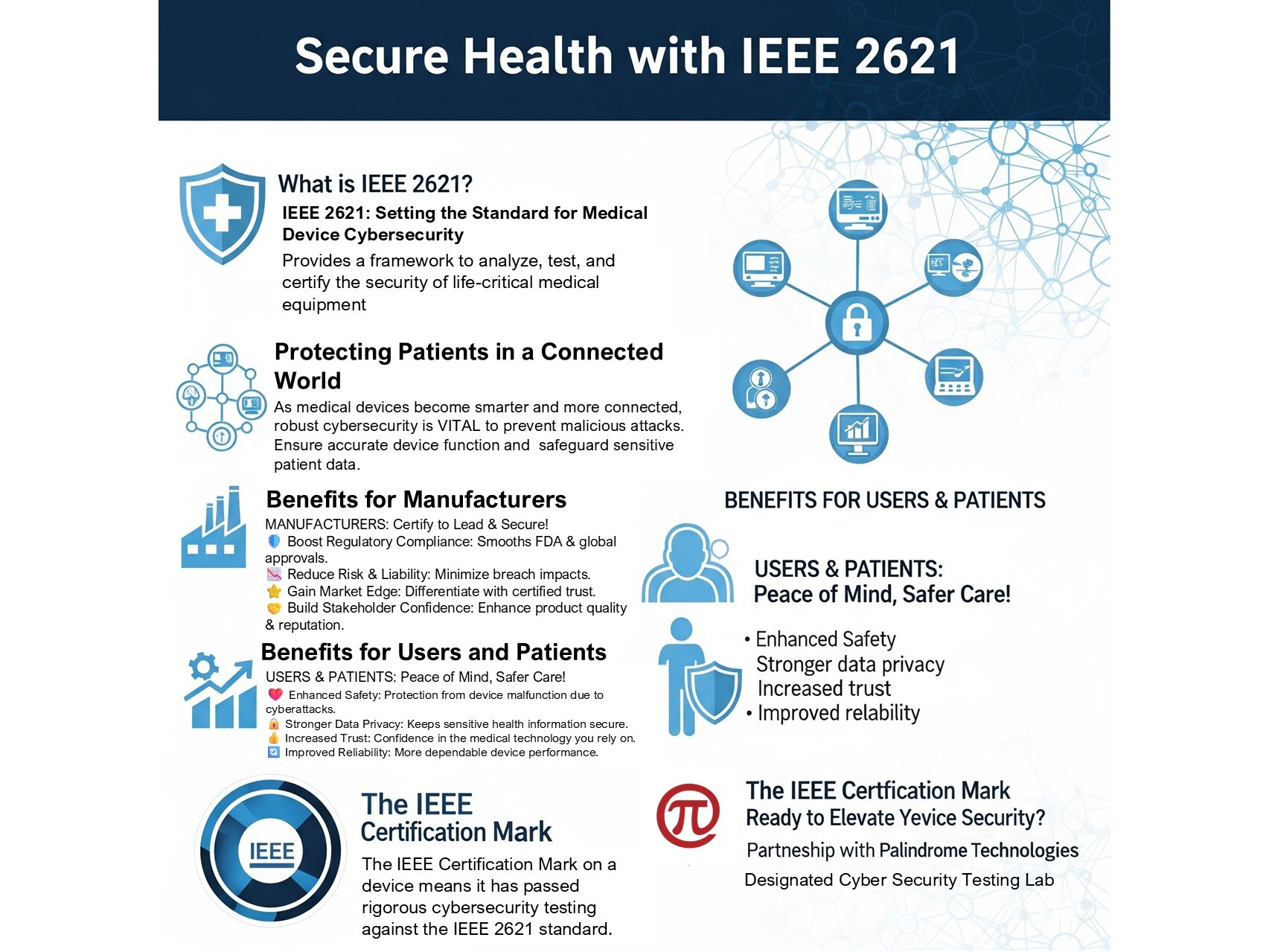Build Secure, Trusted IoT Systems with the IEEE IoT Sensor Devices Cybersecurity Framework
In today's hyperconnected world, every connection introduces new risk and securing your IoT sensor devices is no longer optional, it’s a competitive...
3 min read
![]() Palindrome Technologies
:
May 31, 2025 12:49:47 PM
Palindrome Technologies
:
May 31, 2025 12:49:47 PM

The increasing connectivity of medical devices has revolutionized healthcare, offering unprecedented benefits in patient monitoring, diagnosis, and treatment. However, this digital transformation also introduces significant cybersecurity vulnerabilities. Addressing these risks is paramount, and the IEEE 2621 standard emerges as a critical framework for enhancing the security of these life-critical devices. For medical device manufacturers, embracing IEEE 2621 certification isn't just about compliance; it's a commitment to patient safety, data integrity, and market leadership. For users, it's a beacon of trust in an increasingly complex technological landscape.
IEEE 2621, formally known as the "Standard for the Cybersecurity of Connected Healthcare Devices," establishes a robust framework for analyzing and assuring the cybersecurity of medical equipment. It provides a structured approach to security evaluation, initially focusing on connected diabetes devices with plans to expand to other medical device categories.
The standard is a multi-part series:
The certification process under IEEE 2621 is comprehensive. It typically involves a thorough documentation review, rigorous testing conducted by an IEEE-recognized laboratory using a standardized test plan, and culminates in a standardized report. Successfully certified devices earn the IEEE Certification Mark and are listed in the IEEE Medical Device Registry, signaling their adherence to high cybersecurity benchmarks.
For medical device manufacturers, pursuing IEEE 2621 certification offers a multitude of advantages:
The ultimate beneficiaries of IEEE 2621 certification are the patients and healthcare professionals who rely on these medical devices daily:

The journey to IEEE 2621 certification demands expertise, rigorous testing, and a deep understanding of the evolving cybersecurity landscape. For medical device manufacturers committed to achieving this gold standard, Palindrome Technologies stands as an ideal partner.
As an IEEE-recognized testing facility for the IEEE Medical Device Cybersecurity Certification Program, Palindrome Technologies is at the forefront of medical device security. We offer a comprehensive suite of services designed to guide manufacturers through every stage of the certification process, including:
At Palindrome Technologies, we believe in a proactive, holistic approach to cybersecurity, encapsulated in our "Symmetric Defense" philosophy. We don't just test for compliance; we partner with you to embed security into the DNA of your medical devices, ensuring they are resilient against today's threats and prepared for tomorrow's challenges.
Don't wait for a cyber incident to highlight the importance of robust medical device security. Embrace IEEE 2621 certification to protect your patients, enhance your brand reputation, and secure your place as a leader in medical innovation.
Contact Palindrome Technologies today to learn how we can help you navigate the path to IEEE 2621 certification and build a safer, more secure future for connected healthcare.
In today's hyperconnected world, every connection introduces new risk and securing your IoT sensor devices is no longer optional, it’s a competitive...
The FCC Cyber Trust Mark: Building a More Secure IoT Ecosystem for All
In today's interconnected world, where industrial automation and control systems (IACS) are the backbone of critical infrastructure and...
As the European Union strengthens its regulatory framework around digital products, cybersecurity certification is no longer a competitive...